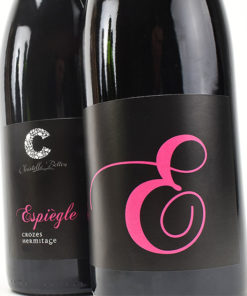2022 Albert Joly Puligny-Montrachet ‘Les Tremblots’
$ 105.00
Questions? Ask a Wine Advisor
Shipping InformationWSI95 This lieu-dit borders with Chassagne-Montrachet. Location, combined with old vines, gives Les Tremblots a bit more texture to pair with just a touch of lemon curd. The grapes are hand-picked and gently pressed, the wines are spontaneously fermented on small Burgundy pieces followed by 12 months of maturation, of the house’s bottlings this is the most classic, steely Chardonnay with dense stone fruit, mineral notes and a streak of cask spices.
They produce pure, classic Puligny – crisp whites with supple fruit and great energy and a purity of precision and minerality that could only come from Puligny.
The Puligny Village wines are separated into two lieux-dits bottlings; Les Tremblots which boarders Chassagne and one on the opposite side of the village, Les Charmes which is really a continuation of Meursault 1er Cru Les Charmes. The vines are properly matured—their plot in Les Tremblots has the oldest vines, which are about 60 years-old, much of the rest being about 40 years-old.
This is already a small domaine to start with, only 4.5 hectares and all in Puligny, but the vast majority of the production is sold to négociants. About 10-15% is commercialised by the domaine itself, and from what I tasted, they could do much more. Sad for them that they have no 1er or grand crus, but they have 0.8 hectares of good aligoté, close to two hectares of Bourgogne Chardonnay and the rest is Puligny villages which is (usually) separated into two named vineyard bottlings; Les Tremblots (towards Chassagne) and on the opposite side of the village, Les Charmes – which really is a continuation of Meursault 1er Les Charmes. The vines have good ages too – their plot in Les Tremblots has the oldest vines, which are about 60 years-old, much of the rest being about 40 years-old.
Winemaking at the domaine is unhurried and traditional. After picking, the grapes are pressed and allowed to settle their gross lees before transfer to barrels for fermentation. Less than one third are new barrels, preserving the fresh fruit intensity of the wines while adding subtle notes of complexity. Fermentations are long and cool, and malolactics proceed naturally, with only minimal batonnage (stirring of the lees). The wines are usually aged in barrels for 18 months, with the additional time on the lees adding complexity, depth, and structure, then bottled without fining or filtration. In most vintages the estate bottles Bourgogne Chardonnay, and two vineyard- designated villages level Puligny-Montrachet from their parcels Les Tremblots and Les Charmes. In the finest vintages a Vieilles Vignes cuvee is bottled from the domaine’s oldest parcels (70+ years of age) in Houlieres and Tremblots.
The wines are quite typically Puligny – expressing the subtle fruits of ripe pear and golden apples, with a note of wildflower honey in the background. The villages Puligny single-vineyard wines present a marvelous contrast of terroirs: the Puligny Les Charmes showing intensity, richness, and depth, with an oily texture and balanced by a long finish of crisp mineral-laced acidity, while the Puligny Tremblots is delicate, suave, and refined, all finesse and elegance over pear-apples fruits and a hint of almond marzipan to finish.
| Varietal | |
|---|---|
| Vintage | |
| Appellation | |
| Winery_Name | |
| Wine_Type | |
| Size | |
| WSI_Rating |
Related products
French Wine
French Wine
French Wine
French Wine


 2018 Vineyard 29 Cabernet Sauvignon ‘Aida Estate’ Napa Valley
2018 Vineyard 29 Cabernet Sauvignon ‘Aida Estate’ Napa Valley  2021 Desperada 'Sackcloth & Ashes' Paso Robles Red Blend
2021 Desperada 'Sackcloth & Ashes' Paso Robles Red Blend 











